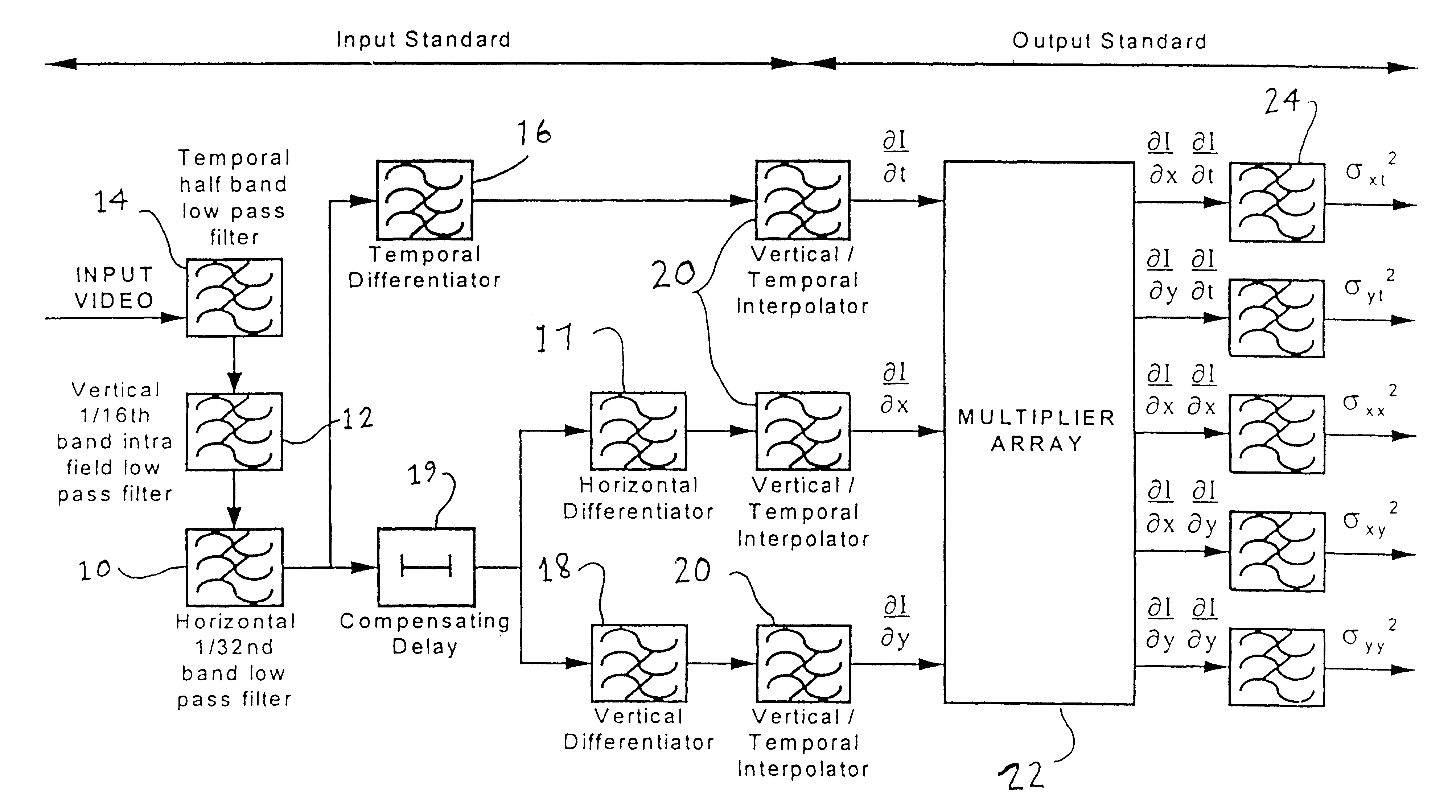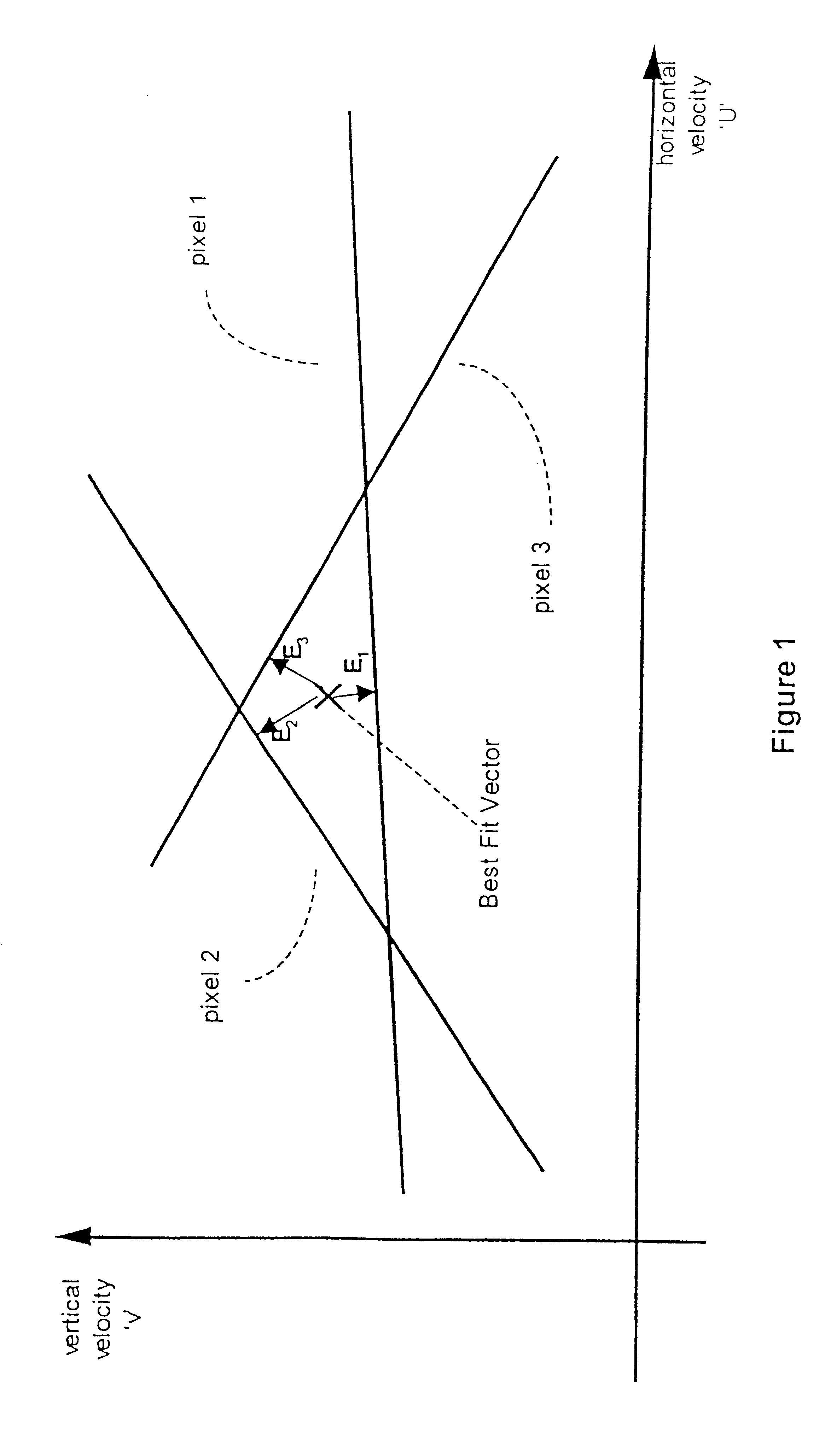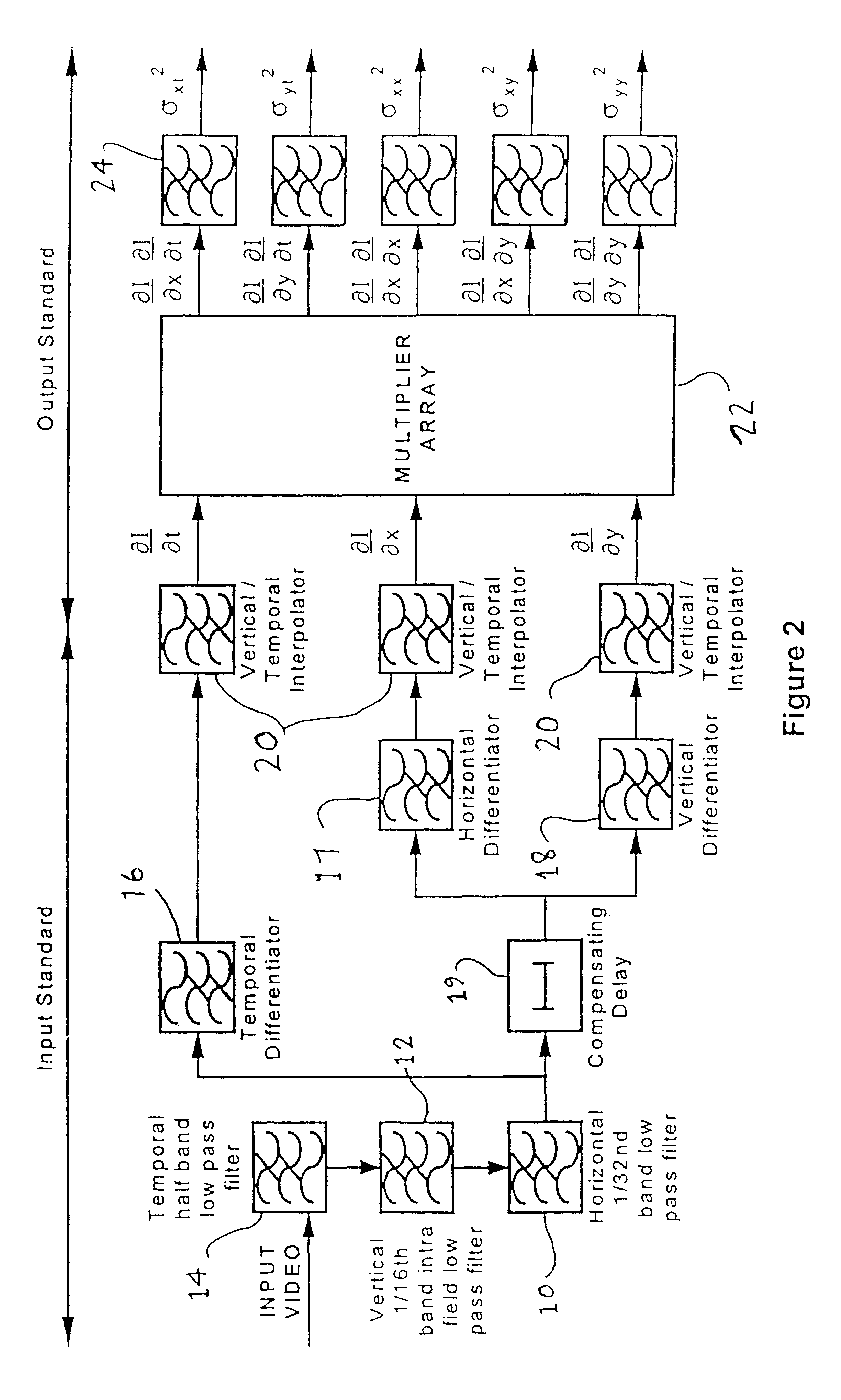Gradient based motion estimation
a technology of motion estimation and gradient, applied in the field of motion estimation, can solve the problems of real-time estimation of horizontal gradient, meaningless gradient estimation, and vertical aliasing which confuses vertical gradient estimation
- Summary
- Abstract
- Description
- Claims
- Application Information
AI Technical Summary
Problems solved by technology
Method used
Image
Examples
Embodiment Construction
This example provides a brief specification for a gradient motion estimator for use in a motion compensated standards converter. The input for this gradient motion estimator is interlaced video in either 625 / 50 / 2:1 or 525 / 60 / 2:1 format. The motion estimator produces motion vectors on one of the two possible input standards and also an indication of the vector's accuracy on the same standard as the output motion vectors. The motion vector range is at least .+-.32 pixels / field. The vector accuracy is output as both a `spread vector` and a `confidence signal`.
A gradient motion estimator is shown in block diagram form in FIGS. 6 & 7 above. Determination of the measurement error, indicated by `spread vectors` and `confidence` are shown in FIGS. 9 & 10. The characteristics of the functional blocks of these block diagrams is as follows:
Input Video:
4:2:2 raster scanned interlaced video.
luminance component only
Active field 720 pixel.times.288 or 244 field lines depending on input standard.
Lu...
PUM
 Login to View More
Login to View More Abstract
Description
Claims
Application Information
 Login to View More
Login to View More - R&D
- Intellectual Property
- Life Sciences
- Materials
- Tech Scout
- Unparalleled Data Quality
- Higher Quality Content
- 60% Fewer Hallucinations
Browse by: Latest US Patents, China's latest patents, Technical Efficacy Thesaurus, Application Domain, Technology Topic, Popular Technical Reports.
© 2025 PatSnap. All rights reserved.Legal|Privacy policy|Modern Slavery Act Transparency Statement|Sitemap|About US| Contact US: help@patsnap.com



